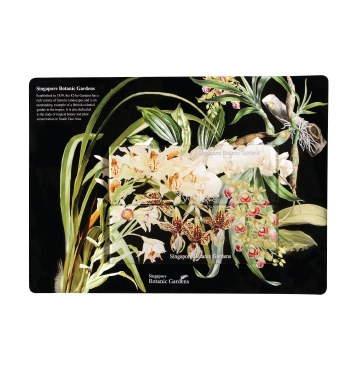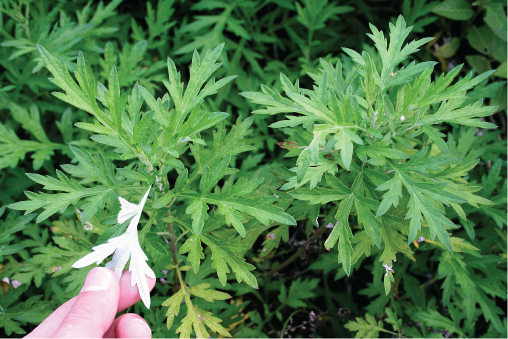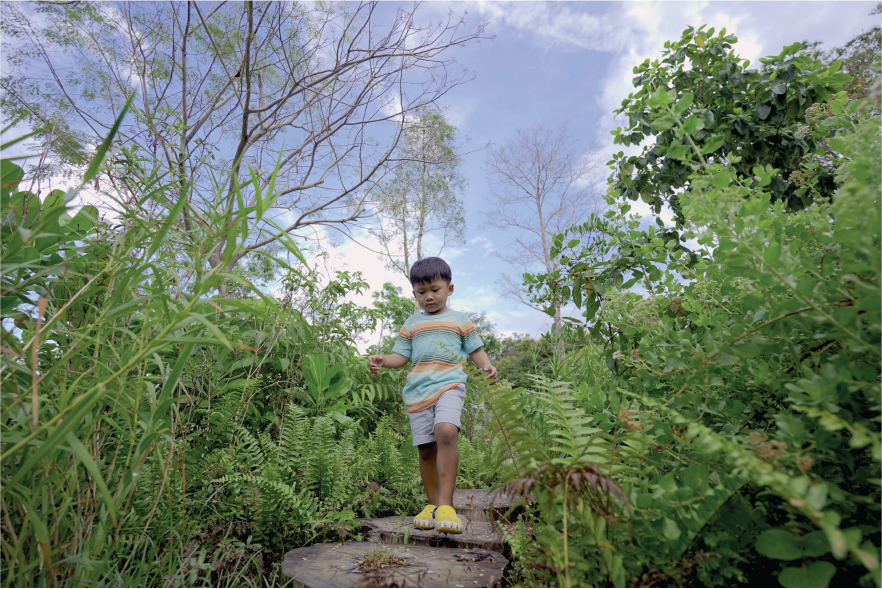Air-layering - A Viable Way of Propagating Woody Plants
Air-layering, also known as marcotting, is a way of getting clones of woody plants that are often difficult to root from cuttings. This method involves propagating a new plant from a branch still attached to the parent plant, by getting roots to form on the branch.
While large number of cuttings can be easily obtained from still green branches or first-year growth, there may be high attrition rate. More time is also needed for these branches to harden and grow to a size suitable for planting out.
Air-layering is often the preferred way of propagating fruit trees, rather than growing them from seeds as this may not give plants of the same quality as the parent (true to type). Also, it will take a longer time to grow, as the new plant has to develop from seed through juvenile stage before the first fruits are produced.
How To Do It
Here are the steps for air-layering:
1. Choose a suitable branch that is not too big and old or too young and green. Older branches may not be able to generate roots vigorously and, when rooted, may be too large to be able to survive on the new small root system. Tender young growth may not be able to recover from the bruising during the air-layering process and may be more liable to snapping while recovering and rooting.
2. Prepare the branch by removing ‘extra’ leaves and shoots near the section for air-layering / rooting. Then remove the bark cleanly using the ringing method, which is preferred.

Ringing method
Alternative preparation method 1: Slit the branch at an angle, keeping the slit open with a splinter. This is a less preferred method as it weakens the branch, making it prone to snapping. A splint is often included when wrapping with the rooting medium to strengthen the branch.

Alternative method 1: Slitting the branch at an angle
Alternative preparation method 2: Make a cut along the middle of the branch and wedge the slit open with a splinter or other materials. This method results in a stronger air-layering than the first alternative method.

Alternative method 2: Cutting along the middle of the branch and wedging the cut open
3. Prepare rooting hormone which is commonly available in two forms – as a gel or powder. The gel is generally easier to apply as it would stay on the cut more easily. Before applying the powder, make a paste by wetting the required amount of the powder.

(From left) A bottle with the active artificial auxin analogue, indole-3-butyric acid (a rooting hormone) in powder form, and the bottle with the same rooting hormone in gel form
4. Apply the rooting hormone to the cut nearer the shoot tip, in the case of the ringing method. For the other two alternative methods, just ensure that the cut surfaces are in contact with the rooting hormone. When the gel is used, allow it to air for a while before proceeding with the following steps.

Applying rooting hormone to the cut on the shoot-ward side of the prepared branch (left), or on the slit (right)
5. Choose a medium to be wrapped around the air-layered section. A range of media can be used for rooting the branch. Commonly used media include garden soil, potting mix, peat moss and sphagnum moss. Different plant species may show different propensity for different media. Hydrate the chosen medium before use. When using soil, be wary of adding too much water which may make it harder to work with. Soil hydrated a few days before is best. To hold the medium in place, it is best to use a clear or translucent plastic sheet with cable ties fasteners, as this set-up retains moisture while allowing easy examination of the air-layered section. Remember to label it on the distal end (towards the shoot tips) with the date of when the air-layering was done and/or what treatments was given.

6. Check the air-layered section regularly for damage, drying or rooting. Should the medium dry out, simply water it using a syringe. As the air-layered section may be damaged by animals such as squirrels, redo it quickly or the cut may heal over instead of rooting. Checking regularly also helps you decide when to cut off the branch from the parent plant, by seeing if sufficient roots have formed to allow for the new plant’s survival. As a rule of thumb, more than 50% of the rooting medium should be covered by the roots.

7. When sufficient roots have formed within and around the medium, the branch can be cut from the parent plant. Remove most of the leaves and smaller twigs from this branch to ensure that the newly formed roots are able to cope with the transpiration needs of the foliage.

8. Place the rooted branch in a pot filled up to the same level as the top of the newly formed root ball. Ensure that no part of the root ball is above the potting mix level as it would dry out. Also ensure that the top of the root ball is not too deep below the level of the potting mix as some plants have stems prone to rotting if buried.

9. Water the new plant well and cover it with a transparent plastic bag to retain humidity. Put it under reduced light and keep it well-watered for its recovery. The plastic cover can be removed once the plant has hardened and does not show any sign of water-stress. When the plant starts to show more vigour and growth, return it to the light conditions that it normally grows under and gradually resume with fertilising.

Gardening with Edibles
NParks will be distributing a total of 400,000 seed packets of edible plant varieties to interested members of public this year, as part of the Gardening with Edibles programme under the Edibles Horticulture Masterplan. Through the programme, NParks aims to encourage the public to garden at home or in community and allotment gardens, as well as give them the opportunity to play a key role in the ownership and stewardship for nature as we grow our City in Nature, which will bring forth benefits of health and well-being.
The seed packet will contain one type of leafy vegetable from among 10 varieties and a plant care sheet in four languages. Members of the public who are interested to receive the seed packets are invited to register at www.go.gov.sg/seed-pack-registration or call 6499 1099 to receive their seed packets through mail.
This brings the total number of seed packets distributed under the Gardening with Edibles programme since its launch in June 2020 to some 860,000, complemented with a slew of free online resources and workshops catering to different skill levels. The programme is also aligned with Singapore’s national strategy to strengthen our food resilience and reach the “30 by 30” goal led by the Singapore Food Agency. The Gardening with Edibles programme was established with the support of founding partners DBS Bank and Tote Board, as well as the Garden City Fund, a registered charity established by NParks. This round of seed packet distribution is made possible by the programme’s partner Singapore Post Limited, through the Garden City Fund.
Gardeners’ Day Out
Participate from the comfort of your home with online activities such as talks and demonstrations, video tutorials of activities and promotions offered. Enjoy Gardeners’ Day Out online at www.nparks.gov.sg/GDO.
You can also enjoy videos of our Gardening With Edibles Masterclass Series. They are conducted by NParks horticulturists, focusing on unique and challenging edibles across different plant families.
Learning More
If you are a gardening newbie, visit NParksSG, our refreshed YouTube Channel that serves as a one-stop repository for close to 300 video resources. It covers topics ranging from types of soil needed for your garden and how to plant, harvest and even cook your edibles.
For more information about the flora and fauna found in Singapore, please visit Flora and Fauna Web.
If you like what you read, follow us on Facebook, Instagram and Telegram to get the latest updates.





Have views or comments on this article? Let us know via this form. If you would like to give us feedback on any other areas relating to our parks and gardens, please submit via https://www.nparks.gov.sg/feedback